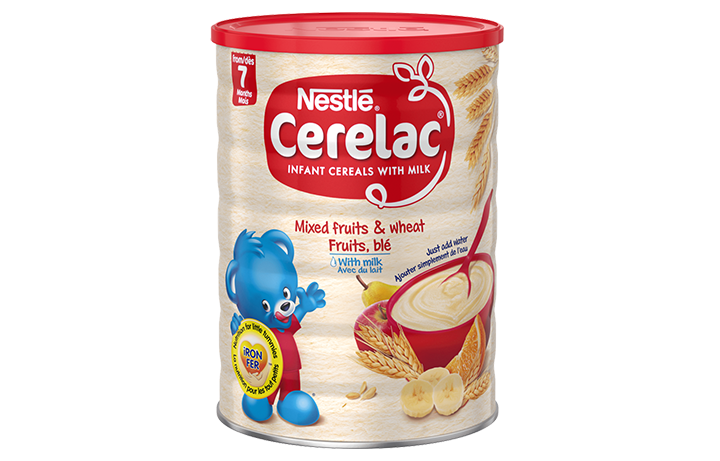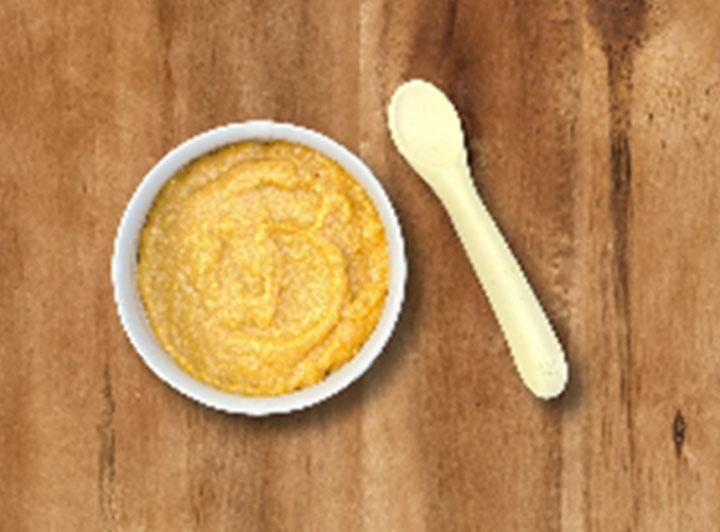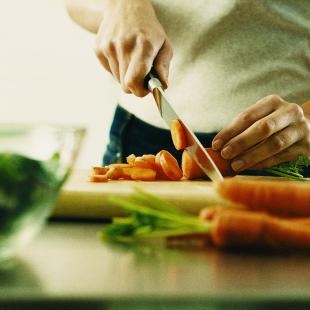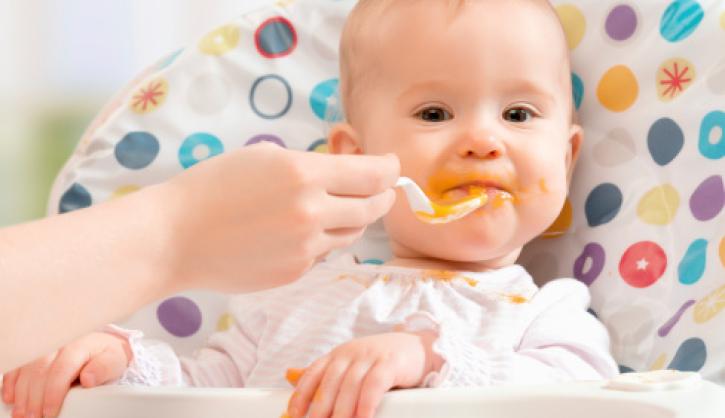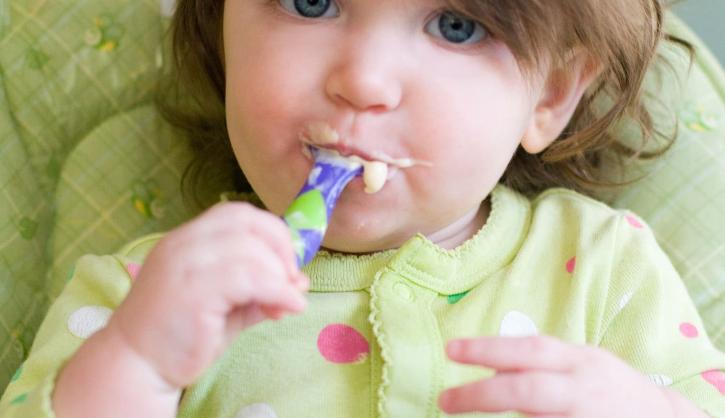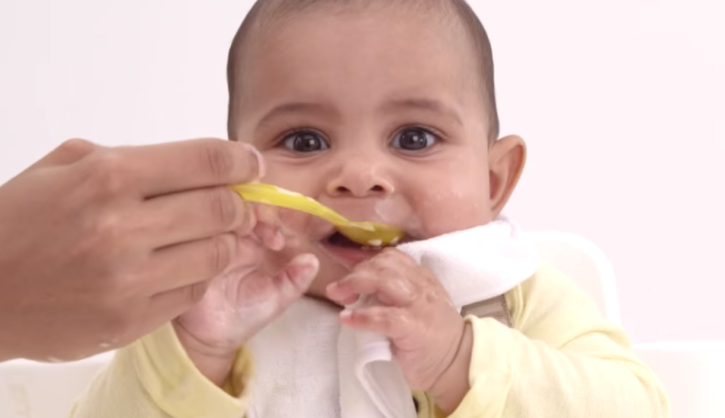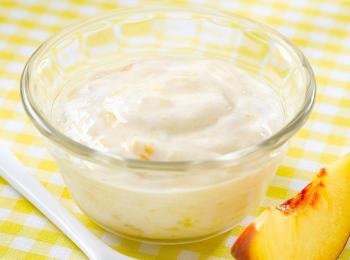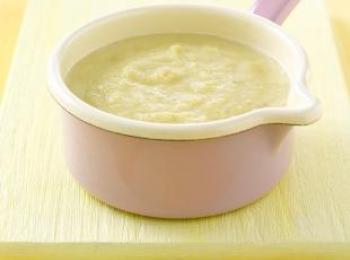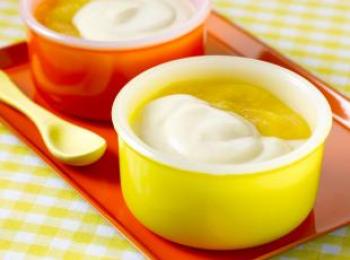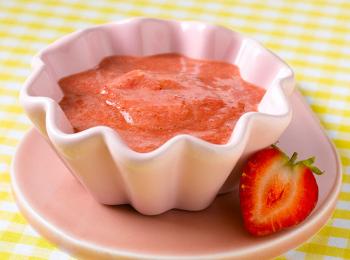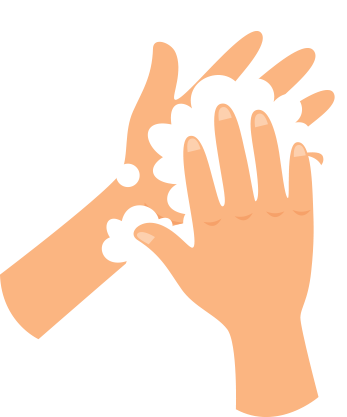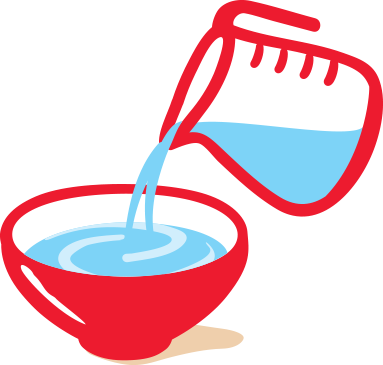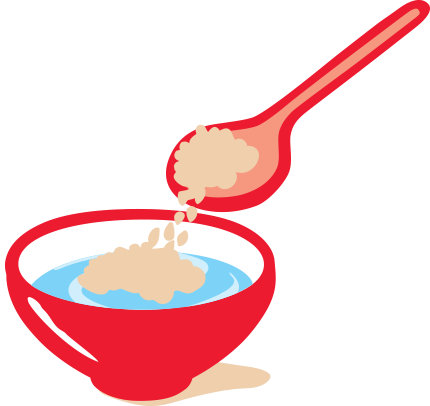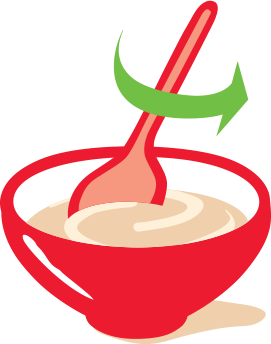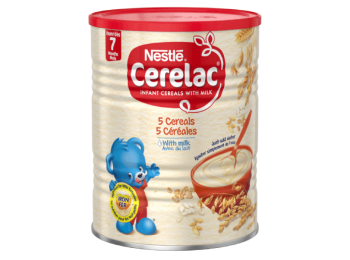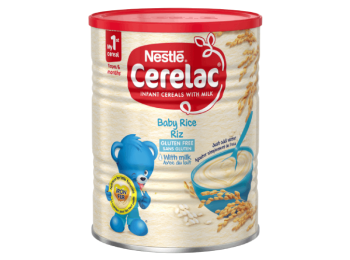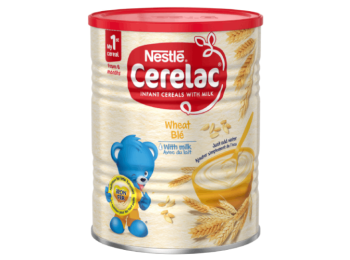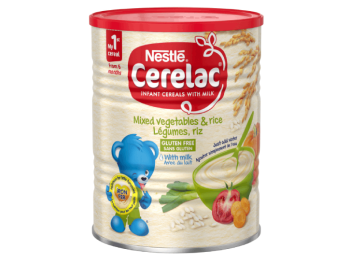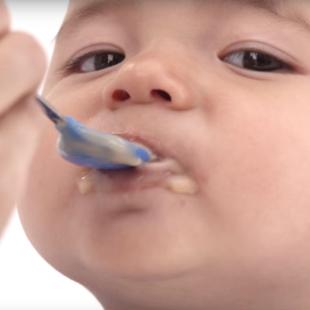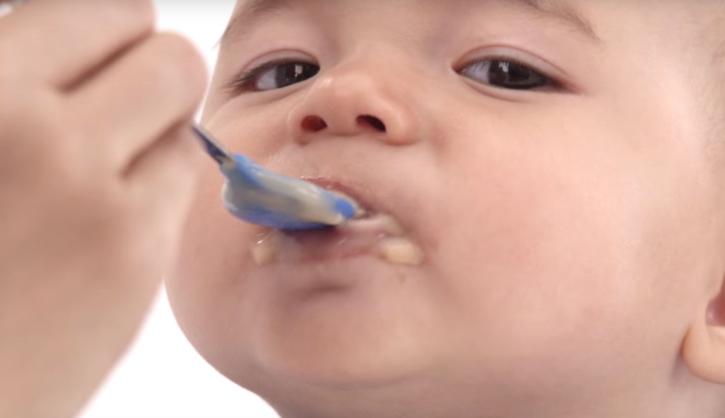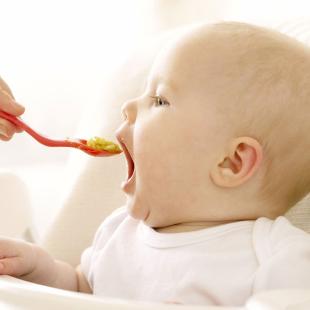Growing up milestones
- May sit in high chair
- Begins to pick up and hold objects
- Puts everything in his mouth
- Turns his head towards sounds
- Can drink from sippy cup with help
- Exchanges smiles
- Starts babbling
- Begins to chew
- Starts to show food likes and dislikes
Daily requirements (765 – 825 kcal/day)
- Breast milk (or follow-on formula):
What?
Breast milk, on demand. If introducing a follow-on formula, take the advice of your health care professional and follow the on-pack feeding and preparation guidelines.
Why?
Breast milk or formula milk is still the main source of nutrients for your weaning baby.
As your baby grows, they’ll begin to need more iron, which they will need to get from solid foods. (Your health care professional will be able to advise you in more detail.) If you choose to make use of a follow-on formula, choose one with a high quality protein and that is enriches with vitamins and minerals, including iron, zinc and the essential fatty acids.
- Infant cereals (100g):
What?
Your baby will need about 50g or 3 tablespoons of iron fortified infant cereal a day.
Why?
Each serving of infant cereal is packed with important nutrients and provides complex carbohydrates that are easy to digest. This makes them ideal for babies who still only have little tummies, and will help him feel fuller for longer.
- Fruits (60-130g):
What?
Your baby needs about 4-8 tablespoons of puréed fruit per day.
Why?
Fruit contains vitamins, minerals, antioxidants (to help keep cells healthy), and gentle dietary fibre (to help support digestion).
- Vegetables (60-130g):
What?
Your baby will need about 4-8 tablespoons of puréed vegetables per day.
Why?
Vegetables contain vitamins, minerals, antioxidants (to help keep cells healthy), and gentle dietary fibre (to help support digestion).
- Meat & Fish (10-15g):
What?
2-3 teaspoons of cooked and puréed meat or fish a day.
Why?
This amount of meat and fish provides high quality protein (needed for building those little muscles). Red meat is packed with iron and zinc. Oily fish, like salmon, are easy to digest and contain the essential fatty acids such as omega 3.
Eating skills
- Holds sippy cup with help: Let him practise his developing motor skills at meal times – let him help you hold his sippy cup.
- Begins to chew: He can mash up small, soft lumps between his gums. So his food will no longer have to be velvety smooth. Try yoghurt with pieces of soft fruit.
- Starts to show likes and dislikes: Introducing a wide variety of fruits and vegetables at this stage will help ensure he doesn’t become a fussy eater.
How much is too much?
Your baby can help you understand how much food he needs. You just have to learn his cues.
Your baby might have had enough if he:
- Slows down eating
- Gets distracted easily
- Closes or covers mouth
- Turns head away
Full up – suggestions
Listen to your baby’s cues. If they are full, don’t try to force them to eat more. It’s normal for the amount your baby eats to change from meal to meal as well as day to day depending on their activity level.
Your baby may still be hungry if he:
- Leans towards the food or spoon
- Reaches for spoon or food
- Smiles and looks at you while feeding
Still hungry – suggestions
After the meal, offer an extra 1-4 teaspoons of infant cereal, meat, fish, fruit or vegetables. You can try to gradually increase the number of teaspoons of infant cereal, fruit, vegetables, meat or fish at the next mealtime by 1-4 teaspoons.
Foods to enjoy
Although breast milk and/or follow-on formula is still the foundation of his diet, food is becoming more important. Especially when it comes to making sure his levels of iron and zinc remain topped up.
- Dairy products:
Pasteurised soft cheese and yogurts are good sources of protein and calcium – an important building block for bones.
- Vegetables:
Leek, onion, broccoli, tomato (peeled and de-seeded), fennel, cauliflower, kale, plantain and breadfruit are packed with vitamins, minerals, antioxidants and provide plenty of gentle dietary fibre. Adding a little good quality vegetable oil will help your baby absorb certain vitamins.
- Cereals:
Wheat, rye, barley and semolina – infant cereals are a source of many important nutrients like calcium, iron and zinc and complex carbohydrates that will provide plenty of energy for growth.
- Fruits:
Strawberry, raspberry, blackcurrant, orange and blueberries are packed with vitamins, minerals, antioxidants and plenty of gentle dietary fibre. They will provide new exciting tastes and textures.
- Meat, Fish and Eggs:
Beef, veal, lamb, pork, chicken, turkey and fish (salmon, cod and hake) – introduce just one type of meat or fish per day to let your baby get used to the new taste and texture. Use the leanest cuts and always cook and purée it. For fish, ensure you remove all bones before puréeing.


